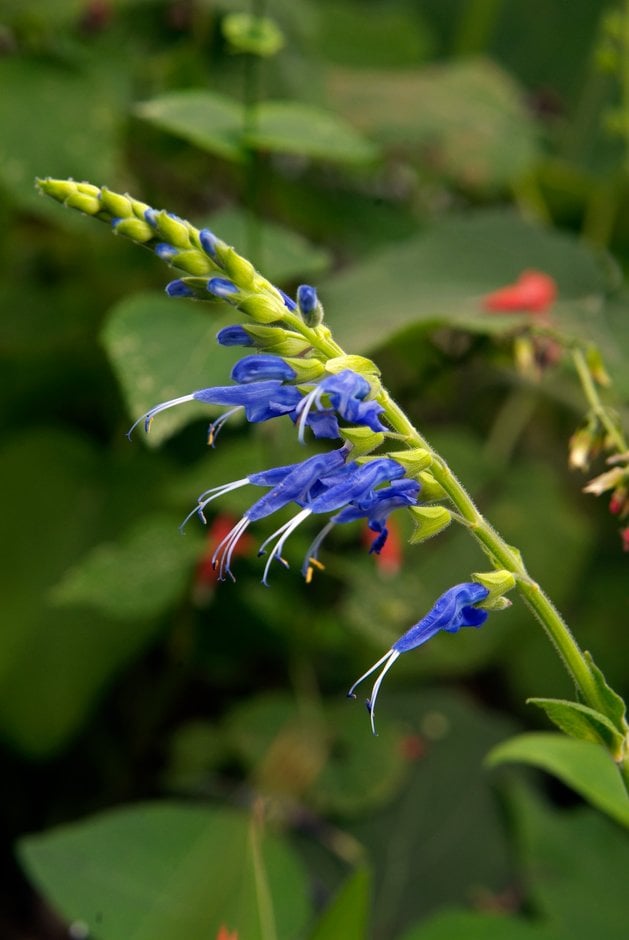Salvia 'Peru Blue'
sage 'Peru Blue'
A woody-based perennial to 1.5m tall with large, prominently veined, greyish-green, heart-shaped leaves. Spikes of blue flowers with protruding white stamens and lime-green calyces are produced from summer to autumn
Synonyms
Salvia macrophylla 'Peru Blue'Salvia 'Tingo Blue'
see moreSalvia macrophylla from Tingo, Peru

Size
Ultimate height
1–1.5 metresTime to ultimate height
2–5 yearsUltimate spread
0.5–1 metresGrowing conditions
Moisture
Moist but well–drained, Well–drainedpH
Acid, Alkaline, NeutralColour & scent
| Stem | Flower | Foliage | Fruit | |
| Spring | Green Grey Silver | |||
|---|---|---|---|---|
| Summer | Blue | Green Grey Silver | ||
| Autumn | Blue | Green Grey Silver | ||
| Winter | Green Grey Silver |
Position
- Full sun
- Partial shade
Aspect
South–facing or West–facing or East–facing
Exposure
Sheltered Hardiness
H3Botanical details
- Family
- Lamiaceae
- Native to GB / Ireland
- No
- Foliage
- Semi evergreen
- Habit
- Bushy, Clump forming
- Genus
Salvia can be annuals, biennials, herbaceous or evergreen perennials, or shrubs. They have paired, simple or pinnately lobed, often aromatic leaves and 2-lipped flowers in whorls, forming simple or branched spikes or racemes
- Name status
Unresolved
How to grow
Cultivation
Grow in light, moderately fertile, moist but well-drained soil in full sun with shelter from cold, drying winds; in frost-free areas in winter, protect from excessive wet, while in frost-prone areas protect plants with biodegradable fleece, move plants under cover, or take cuttings to provide next year's plants
Propagation
Propagate by softwood cuttings in spring or semi-hardwood cuttings in late summer
Suggested planting locations and garden types
- Cottage and informal garden
- Mediterranean climate plants
- Wildlife gardens
- City and courtyard gardens
- Coastal
- Patio and container plants
- Flower borders and beds
- Wall side borders
- Conservatory and greenhouse
Pruning
Cut back spent flower spikes to prolong flowering
Pests
Generally pest-free
Diseases
May be susceptible to honey fungus (rarely), powdery mildews, verticillium wilt and foot and root rots
Love gardening
Sign up to receive regular gardening tips, inspiration, offers and more
View our Privacy Policy
Get involved
The Royal Horticultural Society is the UK’s leading gardening charity. We aim to enrich everyone’s life through plants, and make the UK a greener and more beautiful place.